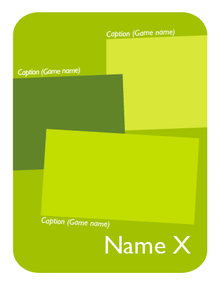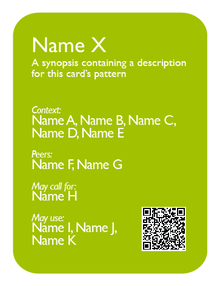Difference between revisions of "Suspicious NPC"
From SoundInGames.com - Sound Design in Games
ValterAlves (Talk | contribs) m |
ValterAlves (Talk | contribs) m |
||
| Line 5: | Line 5: | ||
| rel-tag1=Context:<br> | | rel-tag1=Context:<br> | ||
| rel1=[[Awareness]] <br> | | rel1=[[Awareness]] <br> | ||
| − | | rel-tag2= | + | | rel-tag2=Contrasts with:<br> |
| rel2=[[Unaware NPC]], [[Seeking for PC]]<br> | | rel2=[[Unaware NPC]], [[Seeking for PC]]<br> | ||
| rel-tag3=May relates to:<br> | | rel-tag3=May relates to:<br> | ||
Revision as of 22:15, 13 October 2011

|

| |
| The card's front face | The card's back face |
Candidate Card
Contents
Synopsis
| . |
Relationships
Context:
Awareness ![]() .
.
Contrasts with:
Unaware NPC ![]() , Seeking for PC
, Seeking for PC ![]() .
.
May relates to:
Anticipation ![]() , ....
, ....
Description
This is a candidate pattern that results from recursively acknowledging that there is a typical state of Awareness interpreted by the NPC (and towards the PC), which is between the Unaware NPC state and the Seeking for PC state.
Suspicious NPC may be a form of or be integrated in the triggering of an Anticipation phase.
Examples
[Note: considering that this is still a candidate pattern, more examples then usually are presented, in order to provide a better support for the discussion.]




